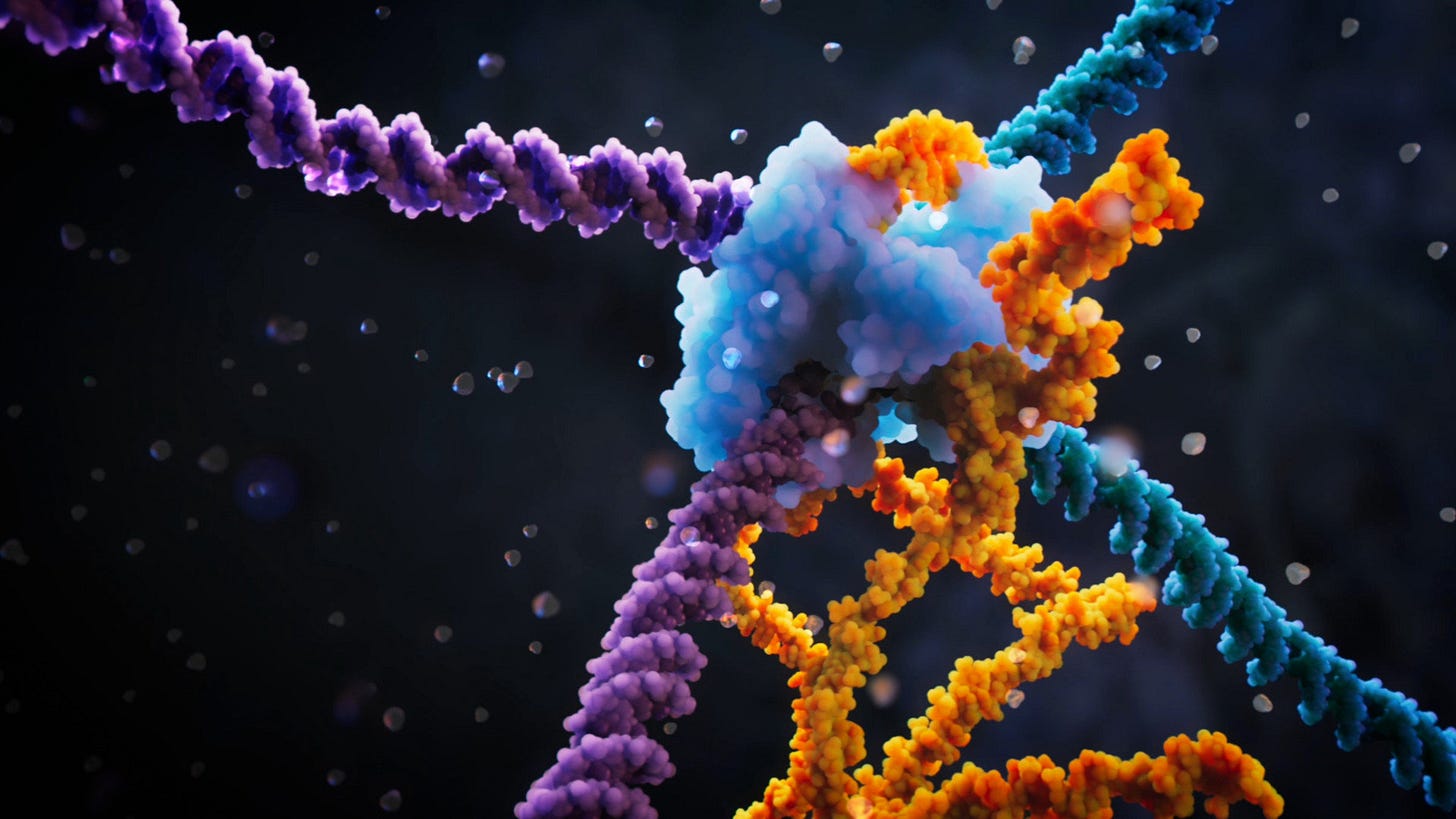BridgeRNA: breakthrough beyond CRISPR
Still only in bacteria, for now. PREMIUM CONTENT subscriber access

The first natural RNA-guided recombinase that can programmably insert, excise, or invert any two DNA sequences of interest comes from the Hsu Lab at the Arc Institute. They discovered a compact and new type of programmable molecular system that Mother Nature created which can directly insert new DNA sequences into the genome using bridge RNAs – a new class of guide type RNA sequences.
The gene editing technique of CRISPR-Cas9 erupted in our science horizon just over a decade ago when it was discovered in bacteria and insects, and then rapidly exploded in applications. Now it appears that genetic engineering technology may be taking its next big quantum leap.
To bring you up to speed on what is currently being used:
CRISPR acts like scissors to cut DNA and then relies on the cell’s double strand break-repair system to fix the cut and insert a new gene sequence. However this repair system can be error prone and inefficient.
Keep reading with a 7-day free trial
Subscribe to BioMedWorks’ Newsletter to keep reading this post and get 7 days of free access to the full post archives.



